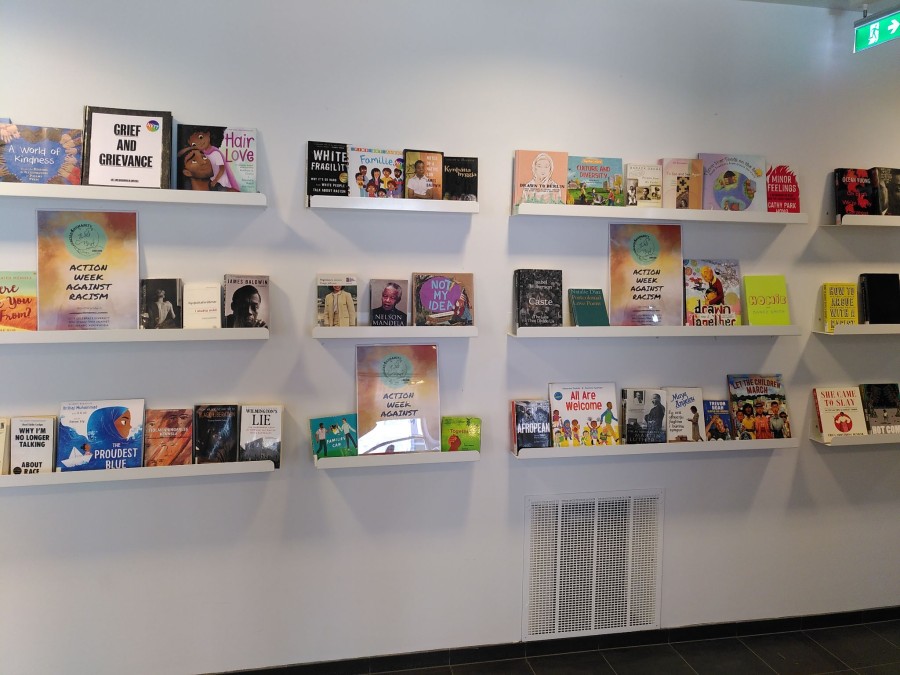
Vocabulary List | Talking about race and racism
Below you can find a useful glossary where some terms that appear frequently in discussions about racism are explained. This list was compiled in collaboration with Miriam Petra Ómarsdóttir Awad, advisor and consultant on prejudice.
We also compiled a book list for children and their guardians, parents, educators to start conversations about racism and how to fight it.
Race
Race is a made-up social construct, and not an actual biological fact. But because race was defined and presented as a scientific statement at the time, many people today still believe that there is actual science behind race. It is not true. Although race is a social construct and not biological, it still continues to matter and affects people's lives who experience discrimination based on these ideas.
Racism
Racism involves one group having the power to carry out systematic discrimination through the institutional policies and practices of the society and by shaping the cultural beliefs and values that support those racist policies and practices.
Anti-Racist
It's not enough to not be racist, we have to be anti-racist. An anti-racist is someone who is supporting an antiracist policy through their actions or expressing antiracist ideas. This includes the expression of ideas that racial groups are equals and do not need developing, and supporting policies that reduce racial inequity.
White Privilege
Refers to the unquestioned and unearned set of advantages, entitlements, benefits and choices bestowed on people solely because they are white. Generally white people who experience such privilege do so without being conscious of it.
Ally
Someone who makes the commitment and effort to recognize their privilege (based on gender, class, race, sexual identity, etc.) and work in solidarity with oppressed groups in the struggle for justice.
Color-Blindness
Color-blind ideology (or color-evasiveness – purporting to not notice race in an effort to not appear be racist). Asserts that ending discrimination merely requires treating individuals as equally as possible, without regard to race, culture, or ethnicity. Color-blindness, by overlooking the cumulative and enduring ways in which race unequally shapes life chances and opportunities for people from different groups, actually reinforces and sustains an unequal status quo. By leaving structural inequalities in place, color-blindness has become the “new racism.” It also ignores cultural attributes that people value and deserve to have recognized and affirmed.
Decolonization
Decolonization may be defined as the active resistance against colonial powers, and a shifting of power towards political, economic, educational, cultural, psychic independence and power that originate from a colonized nation’s own indigenous culture. This process occurs politically and also applies to personal and societal psychic, cultural, political, agricultural, and educational deconstruction of colonial oppression.
Microaggression
The everyday verbal, nonverbal, and environmental slights, snubs, or insults, whether intentional or unintentional, which communicate hostile, derogatory, or negative messages to target persons based solely upon their marginalized group membership.
Cultural Appropriation
Theft of cultural elements—including symbols, art, language, customs, etc.—for one’s own use, commodification, or profit, often without understanding, acknowledgement,or respect for its value in the original culture. Results from the assumption of a dominant (i.e. white) culture’s right to take other cultural elements.
Cultural Racism
Cultural racism refers to representations, messages and stories conveying the idea that behaviors and values associated with white people or “whiteness” are automatically “better” or more “normal” than those associated with other racially defined groups. Cultural racism shows up in advertising, movies, history books, definitions of patriotism, and in policies and laws. Cultural racism is also a powerful force in maintaining systems of internalized supremacy and internalized racism. It does that by influencing collective beliefs about what constitutes appropriate behavior, what is seen as beautiful, and the value placed on various forms of expression.
You can find more definitions and a longer vocabulary list HERE.